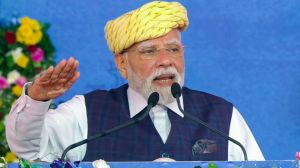3 Years of Dhirubhai’s Divided Empire
Shareholders found two Ambanis better than one even though Mukesh and Anil kept their gloves on.

Shareholders of various Reliance companies have not looked back ever since Kokilaben Ambani, wife of late Dhirubhai Ambani, formally announced the division of the Reliance empire three years ago — June 18, 2005. With both the Ambani brothers setting a scorching pace, expanding furiously, investors saw their holdings in Reliance companies appreciating and fetching good returns.
The flagship of the undivided Ambani empire, Reliance Industries, zoomed by 269 per cent from Rs 630.40 on June 20, 2005 — the first trading after the split was formally announced — to Rs 2,329.20. Mukesh Ambani-controlled RIL is now the most valued listed company in India with a market capitalisation of Rs 3,38,584 crore. On the other hand, Anil Ambani-controlled Reliance Communication (RCOM) — under fire from elder brother Mukesh for takeover talks with MTN — has shot up by 82 per cent to Rs 530.20 from Rs 290.85 on March 6, 2006 when the company was listed.
If an investor had bought 100 RIL shares for Rs 63,040 on June 20, 2005, its value would have gone up to Rs 2,32,920 now. Dividend in the last three years and bonus shares of RCOM would have added to the kitty. RCOM, which made to the top ten in market cap ranking in less then two years, is now the eighth most valuable listed company.
“The split itself was a bonanza for Reliance shareholders. RIL shareholders were allotted bonus shares in all the companies given to the Anil Ambani group as part of the settlement. As an original RIL shareholder, I got free shares in telecom, power, financial services and fuel management companies of Anil. All of them have appreciated,” said Pawan Dharnidharka, a long-time Reliance investor and a BSE dealer.
Take for example, Anil-owned Reliance Capital, which also controls Reliance mutual fund and insurance ventures. Its share price zoomed by 297 per cent from a mere Rs 294.20 to Rs 1,166.55 in the last three years. Reliance Energy jumped from Rs 658.25 to Rs 1,104.65 in the same period. In fact, the rise in most Reliance companies — except companies such as RCOM which were listed later — was faster than the Sensex which rose 124 per cent from around 7,000 points three years ago.
“There has been a major unlocking of value post the demerger. The brothers have been racing against each other and in the process creating value for shareholders. Both have been very aggressive and the economic cycle has also helped them a great deal. They have shown great vision… look at the Reliance stock prices. Some of them have increased about four times in three years,” says Harjit Singh Sethi of Almondz Securities.
According to an analyst, the Anil group’s IPO for Reliance Power at Rs 450 per share proved to be small disappointment for investors. The company later issued a bonus of three for five to compensate the investors for the fall in prices after listing. Notwithstanding this, it was a period of bonanza for Reliance investors in the last three years.
Photos



- 01
- 02
- 03
- 04
- 05




























